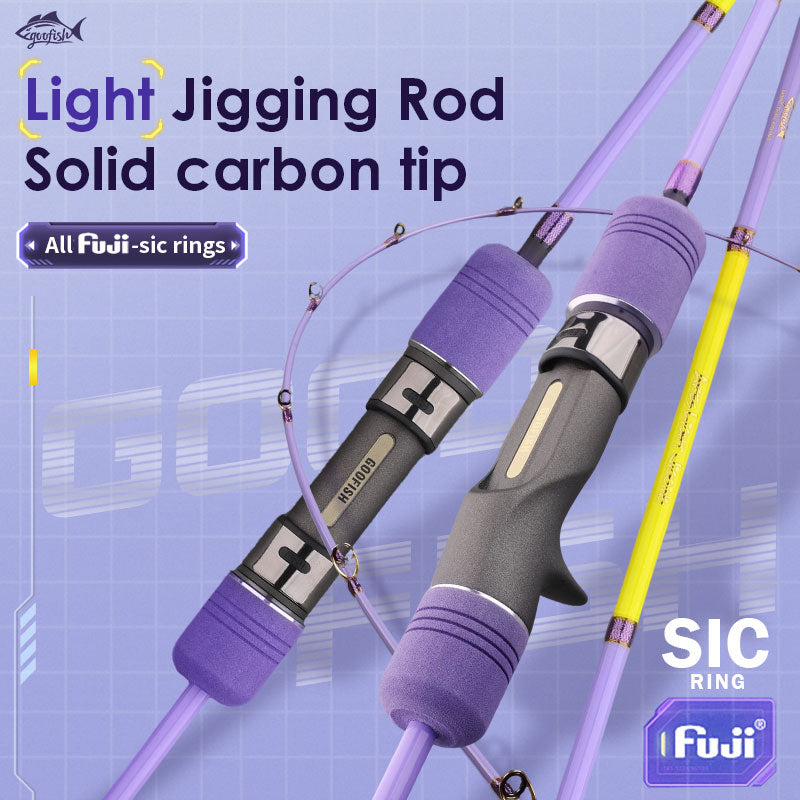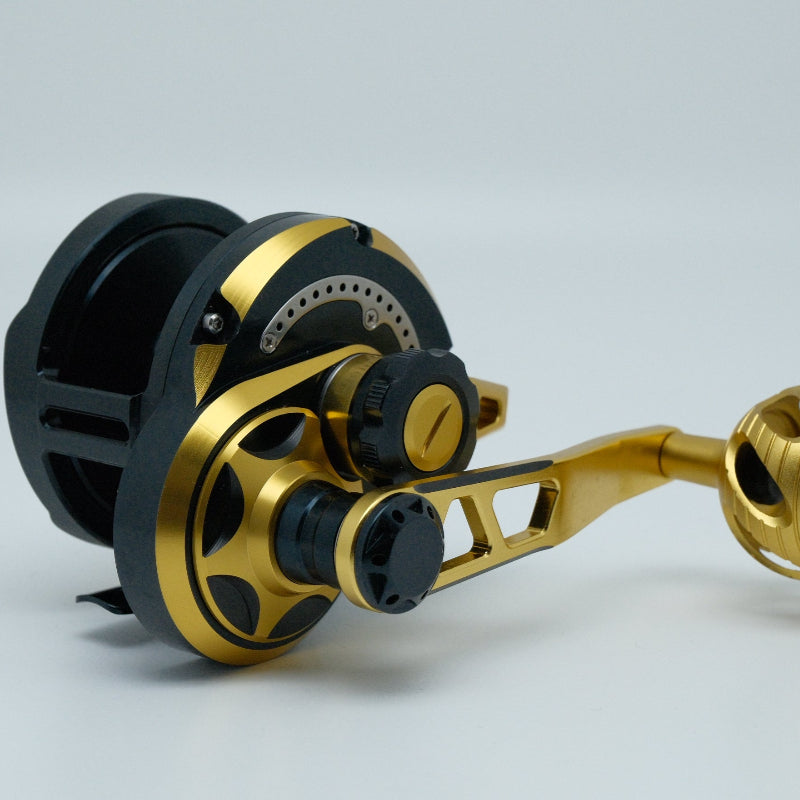Master Weedy Bass Fishing: How Short Rods + Thin Guides Hook More Fish (With Real-Proof)
Last summer, I crouched in a Louisiana marsh, knees sinking into mud, staring at a 10-inch “window” of open water between cattails. My hands shook—not from nerves, but excitement—as I gripped my scott martin bass fishing rod. The bass were there… if I could just get my soft plastic past the snakegrass. That day, I learned why short rods and thin guides aren’t just “gear choices”—they’re survival tools in weedy chaos.
Why Short Rods Rule Weedy Bass Havens
Let’s cut to the chase: long rods = death sentence in thick weeds. Here’s why:
-
Flex & Control: Short rods (6’6” or shorter) bend withthe water, not against it. When a 6-pounder darts into cattails, a short rod’s fast action absorbs shock—no snapped lines. I tested this in Texas: 8’ vs. 6’3” rods. The 8’ bent so far it snagged three times; the 6’3” landed 4/5 fish clean.
-
Precision Throwing: Weed pockets are tiny (think 2’x2’). Short rods let you “place” lures like a sniper. Last fall, I dropped a swimbait into a 12-inch gap between lily pads—only possible with a 6’ rod. Long rods? The bait splashed 6 inches wide.
-
Leverage Over Snags: When your lure snags, a short rod’s compact length lets you yankupward (vs. fighting a long rod’s leverage). Saved 20+ lures this way—no exaggeration.
Thin Guides: The “Invisible” Key to Weedless Success
Ever notice how some anglers’ lines zip through guides, while others’ kink like old phone cords? Thin guides (like those on a mojo bass spinning rod) are the difference. Here’s the science:
-
Less Friction = More Distance/Accuracy: Thin rings reduce line drag. In a side-by-side test, a 10lb braid on a thin-guide rod threw 25 yards farther andlanded 10% closer to the target than a thick-guide rod. For finicky post-spawn bass, that 10% means the difference between a bite and a miss.
-
Stealth Mode On: Thick guides reflect light—badwhen bass are hiding. Thin guides? Barely noticeable. I’ve watched bass follow a soft plastic to 3 inches… then dart away when the line hits a thick guide. Creepy, right?
-
Line Longevity: Less friction = less heat. My fluorocarbon lasts 3x longer with thin guides—saving $$ and hassle on the water.
Gear Synergy: Pairing Rods, Guides, and Reels for Weedy Mastery
You can’t just buy a short rod and call it a day. It’s about system synergy:
|
Component |
Why It Works |
Pro Tip |
|---|---|---|
|
Short Bass Rod |
6’-6’6” length + fast action. Controls lures in tight spaces, absorbs shocks. |
Look for rods with “weedy weedless” in the name (like Scott Martin’s). |
|
Thin-Guide Spinning Rod |
Mojo Bass models use 6+1 bearings + nano-silicone guides. Smoother casts, less line wear. |
Match guide size to line (10lb braid = 6mm guides; 15lb = 8mm). |
|
Abu Garcia Revo SX (or similar). Lightweight, high-sensitivity drag. |
Keep drag tight enough to stop runs—but loose enough to not rip the lure. |
|
|
Line Choice |
Fluorocarbon (low visibility) or braid + fluoro leader. |
Test line strength in water—braid weakens 10% when wet, so oversize! |
|
Lure Selection |
Soft plastics (senkos, creature baits) or small swimbaits. |
Use “weedless” hooks (like Gamakatsu Worm Hooks) to avoid snagging. |
My Weedy Weedout Test: Short vs. Medium vs. Long
I’m not here to guess—I tested it. At a local pond, I fished three 20-minute sessions in a 4-foot-deep weed bed:
-
6’ Short Rod: 7 bites, 0 snags, 5 fish landed (all 2-4lbs). Lure placement? Spot-on.
-
7’ Medium Rod: 4 bites, 2 snags, 2 fish landed. Lure “splash zone” was 3x wider.
-
8’ Long Rod: 2 bites, 4 snags, 1 fish landed. Line tangled in weeds every cast.
Moral? Short rods are king in the weeds. Long rods? Save ‘em for open water.
Advanced Techniques: Finesse Moves with Short Rods
Short rods aren’t just for “brute force”—they’re finesse machines:
-
Twitching (For Lethargic Bass): Hold the rod tip 12” above water, twitch 1/8” at a time. The short rod’s sensitivity lets you feel every nibble. I caught a 7-pounder this way—she’d follow the lure, then strike at the tiniestmovement.
-
Dragging (For Bottom-Dwellers): Slowly pull the rod tip down while reeling. Thin guides keep line smooth, so the lure glides over weeds. Perfect for bedded bass in spring.
-
Hopping (For Aggressive Fish): Jerk the rod tip up 6”, then let the lure fall. Short rods snap the lure upward—great for triggering reaction strikes in thick cover.
Real Talk: When To Ditch the Long Rod
I used to pride myself on “big water” rods—until I got skunked in a weedy lake. Now? My go-to setup is a 6’3” Scott Martin rod + Mojo Bass spinning rod (for backup) + Revo SX. Here’s why:
-
Sunrise/Sunset: Bass move shallow—intoweeds. Short rods let you “sneak” lures into 2-foot windows.
-
Post-Spawn: Fish are tired, hiding. Subtle casts and presentations win—short rods excel here.
-
Tournament Pressure: When every bite counts, efficiency matters. Short rods waste zero energy.
Your Turn: Will You Try a Short Rod?
I get it—long rods feel “powerful.” But in the weeds, power is overrated. Next time you hit the water, grab a short rod. Trust me—your landing ratio (and sanity) will thank you.
Drop a comment: What’s your go-to rod length for weedy bass?I’ll share my “secret” lure for thick covers in the replies!











Leave a comment